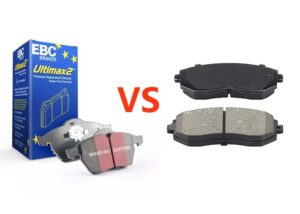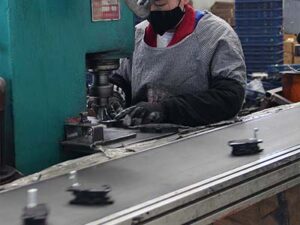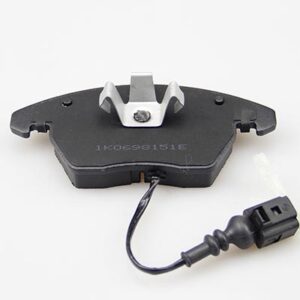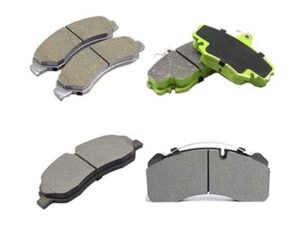Regular inspection and maintenance of the brake system not only ensure the safety and reliability of the vehicle but also effectively extend the lifespan of the brake system, improve brake performance, and guarantee driving safety.
The components of the brake system include the brake pedal, booster, master cylinder, brake lines, wheel cylinders or brake calipers, and friction materials. Common brake systems include disc brakes and drum brakes. KETULLA specializes in manufacturing disc brake pads.
We know that brake pads are crucial consumables in the brake system, and timely replacement is essential to maintain brake performance. Whether it’s wet, slippery, or snowy road conditions, contaminated friction materials, aging system components, or corrosion of components, regular inspection and timely replacement of brake pads are indispensable parts of brake maintenance.
Choosing high-quality replacement parts and using certified products and services not only enhance the performance of the brake system but also ensure driving safety.
What is the brake pad? The types of brake pads
There are three main types of brake pads on the market: semi-metallic, carbon fiber, and ceramic. KETULLA provides formulations for these three products, manufactured in accordance with the ECR90 quality system standards. Each type of brake pad has its unique characteristics and advantages, suitable for different driving needs and conditions.
Organic brake pads: These pads are mainly composed of aramid fibers, glass fibers, and graphene, and contain 10%-30% metal fibers. They are known as low-metallic brake pads. Characteristics of these pads include:
- Affordable price.
- Fast heat conduction.
- Suitable for passenger cars, trucks, and light vehicles.
Semi-metallic brake pads: These pads contain approximately 30%-50% metal material. Semi-metallic brake pads are standard in most automotive systems, offering good wear resistance and noise control. Characteristics:
- Moderate price.
- High wear resistance.
- High heat conduction.
- Low noise, less dust.
the brake system includes the brake pedal, booster, master cylinder, brake lines, wheel cylinders or brake calipers, and friction materials. Common brake systems include disc brakes and drum brakes. KETULLA specializes in manufacturing disc brake pads.
We know that brake pads are crucial consumables in the brake system, and timely replacement is essential to maintain brake performance. Whether it’s wet, slippery, or snowy road conditions, contaminated friction materials, aging system components, or corrosion of components, regular inspection and timely replacement of brake pads are indispensable parts of brake maintenance.
Choosing high-quality replacement parts and using certified products and services not only enhance the performance of the brake system but also ensure driving safety.
Ceramic brake pads: Offering the advantages of both organic and metal-based brake pads, ceramic brake pads provide quieter operation, longer lifespan, and better heat resistance. Ceramic brake pads are made of ceramic fibers and other materials, providing a harder and more durable surface.
Low-metallic brake pads: Offer better braking performance than semi-metallic brake pads but without noise issues. Due to their softer composition, they have a shorter lifespan.
KETULLA FF grade ceramic brake pads: Suitable for high-end sports cars and racing cars, providing optimal heat resistance and performance.
By understanding the types and characteristics of these brake pads, we can choose the most suitable ones according to our vehicle type and driving habits to ensure driving safety and optimal brake system performance.
Brake pads are primarily composed of a metal backing plate, shim, and friction material. The friction material is responsible for generating friction between the brake pad and the brake rotor, while the shim, made of non-insulating material, serves to insulate and dampen noise. The friction block consists of friction material and adhesive, which are bonded together through heat and pressure to form the brake pad.
The main components of brake pads include a steel backing, adhesive insulation layer, friction material layer, noise insulator, and accessories. The adhesive, being the most crucial component in the friction material, can affect its thermal decomposition and mechanical properties. Reinforcement fibers are used to strengthen the base material, primarily made of mineral fibers, steel fibers, and organic fibers.
Semi-metallic brake pads contain metal fibers that provide excellent durability and heat resistance, as well as offering a quieter and smoother braking experience. High-quality brake pads ensure better performance, longer lifespan, and reduce noise and vibration during braking.
Timely replacement of brake pads is crucial. Typically, brake pads are equipped with accessories such as brake pad wear indicators or sensors. Different vehicle models are matched with different brake pad warning devices; some use indicators, while others can be connected to the vehicle’s warning line. Once the brake pads wear to a certain extent, the warning line is triggered, emitting a squeaking sound to indicate the need for replacement because continuing to use worn brake pads is no longer safe.
The distance a vehicle can travel after the brake pad warning is activated varies depending on individual driving habits and conditions. Continuing to use worn brake pads may wear down the brake rotor, leading to brake rotor damage, and necessitating the replacement of both brake pads and rotors, which can be costly.
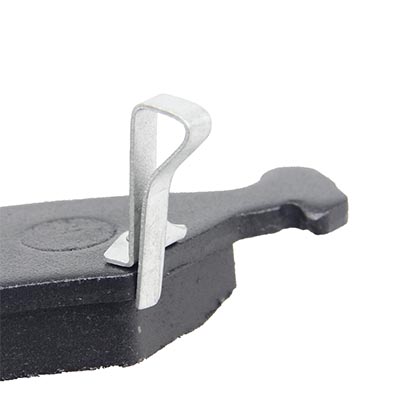
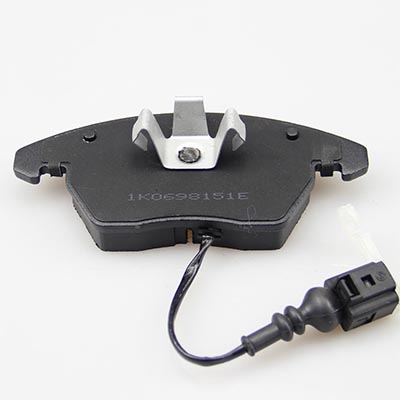
When should brake pads be replaced?
Brake pads generally need to be replaced after the vehicle has traveled approximately 60,000 kilometers. However, the warranty for KETULLA brake pads ranges from 30,000 to 50,000 kilometers, depending on driving habits and road conditions.
When the thickness of the brake pads approaches or falls below 0.3 centimeters, it’s time to replace them. If you hear friction noises when lightly pressing the brakes, immediate replacement is necessary. When the friction material thickness decreases to 8 millimeters, it’s advisable to inspect and possibly replace the brake pads. When the pad and steel plate thickness decreases to 3 millimeters, immediate replacement is recommended to avoid safety hazards.
The lifespan of brake pads typically falls between 30,000 to 50,000 kilometers, depending on driving habits and conditions. Warning signs for brake pad replacement include decreased braking performance, increased braking distances, and abnormal noises. Regular inspections are necessary to determine when brake pads need replacement.
New brake pads usually have a thickness of approximately 1 centimeter, with a usable limit of 3 millimeters. If brake pads are excessively worn, contaminated with oil, or show signs of abnormal wear or tearing, they should be replaced immediately. It’s essential to regularly check brake pad wear and replace them as needed. Replacement intervals may vary depending on the type of brake pads and driving conditions.
Regularly inspect the thickness of brake pads, and if worn to at least 1/4 inch, it’s time for replacement. The lifespan of brake pads depends on various factors, including driving style, vehicle type, and load conditions. Regular inspections are necessary to determine when replacement is needed.
About Ketullabrakes
Ketulla is an OEM brake pads manufacturer & supplier from China, with running for 24 years.
We have established partnerships with over 13,200 clients from 32 countries and regions around the world. Our company adheres to the principle of prioritizing quality, ensuring timely delivery, and promptly resolving any issues encountered, all while collectively facing the current economic downturn.
We have 3 formulations for our customers: semi-metallic, low metallic, and ceramic. and hold 2351 different brake pad models to be compatible with 98% of vehicles in the world. Furthermore, we have been continuously optimizing and adjusting our formulations, researching and developing new products tailored to meet market demands.
If you are looking for a reliable brake pads manufacturer, look no further, KETULLA is your best choice, contact us now!

